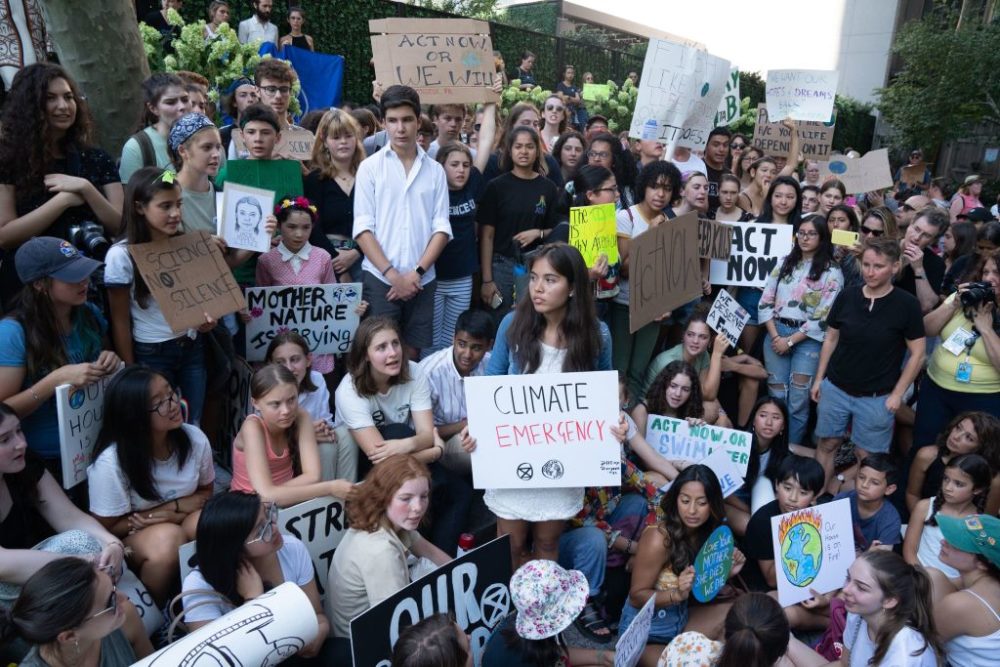Advertisement
Young Climate Activist Says Her Generation Will Be Most Impacted 'If We Don't Do Something Right Now'
Resume
Young climate justice activists don’t have time for skeptics.
“Our future is going to be the most affected if we don't do something right now,” 17-year-old environmental activist Xiye Bastida says.
Up until recently, their movement has been completely youth led. But Bastida says, for voting power and “intergenerational cooperation and collaboration,” the teens are turning to adults for help.
Yet, it’s important to note their movement exists because of youth organizing. Student walk-outs across Europe began in 2018. Since then, they have put together massive global strikes, which included participation from more than 100 countries.
On Friday, hundreds of teens joined Swedish environmental activist, 16-year-old Greta Thunberg, protesting outside of the U.N. headquarters in New York City, insisting world leaders take action. Thunberg told the Guardian she traveled to the U.S. for this demonstration to get “a concrete plan, not just nice words” from lawmakers.

“Our global demand is that the temperature stays below 1.5 degrees of warming,” Bastida says. That leaves 10 years and five months to curb carbon emissions if humans want to meet that goal, she says.
As Bastida prepares for the September 20th strike — which she says will be “the biggest global climate strike yet” — she reflects on the overwhelming support from the previous two events.
“On March 15th, we had our first global climate strike with 1.6 million students,” she says. “On May 24, we heard we had our second one with 1.9 million students.”
For organizers involved in the worldwide demonstrations, getting the message across is key.
In July, Thunberg told Here & Now that spreading information about climate change is one of the most practical actions one can take.
“The most important thing you can do now as an individual is to try to read all these things that no one wants to read,” Thunberg said. “And I know that is very boring, and that is why this information needs to become more available and then put pressure on the people in power.”
Bastida says this is exactly what her and other climate leaders are doing — being as informed as they can.
“We read the reports. We know about the IPCC. We know that we have 415 parts per million of carbon in the atmosphere and that the safe amount is 350 parts per million,” she says. “So we can communicate [to] you the science. We haven't done the science ourselves, but we are messengers because we need to act now.”
Ciku Theuri and Ashley Locke produced and edited this interview for broadcast with Tinku Ray. Serena McMahon adapted it for the web.
This segment aired on August 30, 2019.